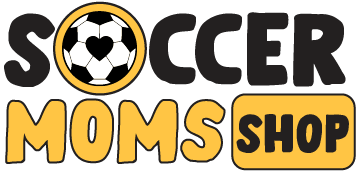First in a multiple part The Body Series, with the aim of enabling parents to better support their young athletes on issues related to identifying and dealing with minor physical ailments, the Soccer Parenting Association welcomes Dr. John Lucas discussing how to care for Minor Muscle Injuries.
SoccerParenting (SP): If our child sustains a minor muscle injury during a game, how should we treat it in the first 24 hours?
Dr. Lucas: Usually, if the injury is minor (only causing some discomfort with use, but no real impairment of function or skill) the only treatment that is required is some icing in the immediate time period after the game and injury, to minimize swelling and discomfort. Keeping the affected area elevated and resting the injured part is a good idea as well.
SP: Is it okay to give them ibuprofen or acetaminophen?
Dr. Lucas: I usually recommend acetaminophen over ibuprofen or naproxen (Aleve) because as a class of medications, NSAIDs (to which both ibuprofen and naproxen belong) can cause increased bleeding or bruising. This is why most surgeons recommend stopping NSAID use a couple days before surgery—they don’t like their patients to bleed more than necessary! After the first 24 hours, NSAID use is ok but I like to avoid it in the immediate time after injury.
SP: When is a visit to the doctor’s office in order?
Dr. Lucas: Any injury that significantly impairs function (limping, walking, throwing, carrying light weights, full range of motion) or involves unusual swelling or discoloration should be seen by a physician. Any injury to an extremity that appears deformed (soft spots where the muscle should be, “divots” in the tendon attachment areas, etc.) should prompt a visit to your local emergency department or Urgent care.
SP: How should we treat it just prior to sports participation (the next practice, for instance)?
Dr. Lucas: After the first 24 hours, using warmth/heat prior to exercise can increase blood flow locally and help to make a tight and sore muscle feel better to use. But really, the patient should be able to compete at a fairly aggressive level without pain-limited functional debility before heading back out to the field.
SP: So, what’s the general advice for ice vs. heat and a muscle injury?
Dr. Lucas: This is a very common question I hear in the ER. The answer above reflects my own personal advice and can be debated but in general, I recommend heat prior to competition with a mild muscle injury and ice immediately thereafter. Most collegiate and pro trainers seem to do the same thing for their athletes, so I think I’m in good company.
SP: I’ve heard that heat helps a muscle injury heal more quickly – why is this the case?
Dr. Lucas: Heat causes local vasodilation (opening of blood vessels) which allows more blood flow to the warm area. More blood flow=more good healing mojo (my nonscientific term for cytokines, inflammatory mediators and platelets and plasma) reaches the affected area.
SP: What is the difference between a strained muscle and a pulled – is it the same thing?
Dr. Lucas: These really are just layperson terms for minor muscle injury. They are really equivalent. Keep in mind, with a strain/pull/sprain what has occurred is a tearing of muscle fibers (and sometimes tendon fibers) on a microscopic level. This is what causes the bleeding into the muscle and thus the bruising. With these tears come a weakening of the strength of the muscle unit, which leaves the whole thing more vulnerable to further injury.
SP: Scenario:
My child received a knee from an opponent to his quad during a game. He limped a bit during the game for a couple of minutes but finished the game strong and seemed absolutely fine. Five minutes into the next practice, two days later, he pulled up with a quad strain and had to sit out for the practice and struggled all week with this muscle injury. He said he was fine after the game and wasn’t in any pain. How/Why did this injury happen almost 48 hours after the game? What, if anything, could we have done to prevent this from happening?
Dr. Lucas: See my comment above. Basically, the muscle fibers have torn and until they heal completely (can actually be weeks) the overall strength of the muscle (tensile strength here, not lifting strength but that’s affected too) is weaker than usual. If the initial injury causes only minor bleeding/bruising and pain, the patient may jump back into activities thinking that all is “good to go”. A more serious injury such as what your scenario describes may result because the muscle fibers have not had sufficient time to heal. The best way to prevent something like this in the future is to return to activity slowly and in a methodical fashion, gradually increasing stress on the muscle over a few days in order to minimize further microtrauma. But in the end, no approach is perfect and repeat injury can occur in even the most conscientious player.
SP: Any final advice/thoughts about the subject?
Dr. Lucas: Pay attention to injury and don’t return to competition (especially in younger children) until it can be done without any pain. “Pushing through the pain” while kind of tough sounding and admirable can lead to further injury in the young. Take the time to allow for good healing and teach your kids to be a great teammate while they are recovering on the sideline!
Source: https://soccerparentresourcecenter.com
If you like this article, Follow us on FACEBOOK and INSTAGRAM and PINTEREST!

